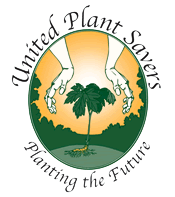People frequently lament the imminent passing of animal species, especially species of large impressive mammals, while at the same time ignoring the extinction of plant species. That is why one of my favorite organizations is United Plant Savers.
Makers of herbal products were once small in scale and few in number. But herbalism has become big business, and competition often forces herbal enterprises to focus on larger production and greater diversity of products, thus consuming additional plant resources. Furthermore, other countries with an uninterrupted tradition of herbal healing are experiencing a severe shortage of medicinal plants and look to North America to supply them. This increased usage, along with habitat destruction, is causing an ever-increasing shortage of plant resources, including some of the most treasured medicinal species.
Internationally, about 21 percent of all medicinal and aromatic plant species — that’s 15,000 species — are at risk, according to a report by the Medicinal Plant Specialist Group of the World Conservation Union’s Species Survival Commission. Here in North America, at-risk medicinal plants include American ginseng (Panax quinquefolius), black cohosh (Actaea racemosa), echinacea (Echinacea spp.), goldenseal (Hydrastis canadensis), osha (Ligusticum porteri), and peyote (Lophophora williamsii).
 |
The mission of United Plant Savers is to protect native medicinal plants of the United States and Canada and their native habitat while ensuring an abundant renewable supply of medicinal plants for generations to come. It sponsors replanting projects to help reestablish at-risk medicinal plant species. It has established the United Plant Savers Botanical Sanctuary Network, to serve as important preservers of seed stock, and also as educational centers for plant conservation and organic cultivation.
The goal is to help members develop methods to restore their land and reclaim it as sacred space, a sanctuary for people wildlife and plants, based on the belief that native medicinal plant conservation is entirely dependent on the preservation of the whole of the biotic community. The group has also focused on education about plants and the pressures from loss of habitat, over-harvesting, and market demand.
The policy of United Plant Savers has never been against wildcrafting; in fact, says herbalist Rosemary Gladstar, president of the organization, wildcrafting is “one of our great arts as herbalists.” The organization “did ask the herbal and manufacturing community to realize that it was very bad business practice to pull up the things you depend on for your business. But it’s deeper than just being bad business. It’s not ethical. That’s really the bottom line of it. So it wasn’t really about not wildcrafting, it was about identifying plants that were sensitive that we needed to be mindful of for their sake as much as our own.”
Indeed, over the last decade, a general consensus has developed on the principles and practices of ethical wildcrafting. United Plant Savers has outlined the basic principles of ethical wildcrafting as follows:
- Always wildcraft with thoughts of beauty. Put beauty into your work. Ask yourself how much more beautiful this plant community will be when you are finished gathering.
- Think first about the plant community and how many plants it can manage without, not how many plants you need in order to make products or profits.
- Treat the native plant complexes like the fine perennial gardens that they are.
- Do not upset undisturbed native soil in any manner – it is rare and precious.
- Take only as many plants as you can reasonably use; strive for zero waste.
- Replant the areas you are harvesting from. Scatter seeds, replace crowns, and plant roots. Leave plenty of mature and seed-producing plants to reproduce.
- Start a replanting project in your area to help re-establish at-risk medicinal plant species.
- Know the at-risk medicinal plant species in your bioregion.
If we are serious about a relationship of love and trust with the plant spirits, we have to respect their bodies, which are the physical plants who live on the earth.

- Previous Post: Blueberry
- Next Post: Protecting Peyote
- More Articles Related to: Plant Medicine, Sacred Plants


